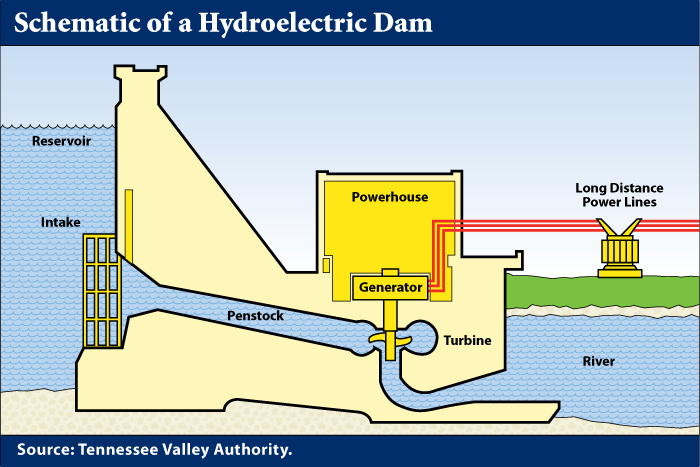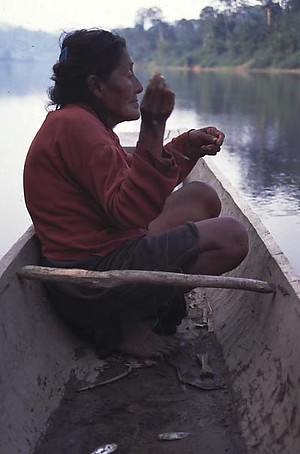- Home
- About Us
- Issues
- Countries
- Rapid Response Network
- Young Adults
- Get Involved
- Calendar
- Donate
- Blog
You are here
Mega-Infrastructure
Hydroelectric Dams:

The movement of water as it flows downstream creates kinetic energy that can be converted into electricity. A hydroelectric power plant converts this energy into electricity by forcing water, often held at a dam, through a hydraulic turbine that is connected to a generator. The water exits the turbine and is returned to a stream or riverbed below the dam.
The theory is to build a dam on a large river that has a large drop in elevation .The dam stores lots of water behind it in the reservoir. Near the bottom of the dam wall there is the water intake. Gravity causes it to fall through the penstock inside the dam. At the end of the penstock there is a turbine propeller, which is turned by the moving water. The shaft from the turbine goes up into the generator, which produces the power. Power lines are connected to the generator that carry electricity to your home and mine. The water continues past the propeller through the tailrace into the river past the dam.
Hydroelectric Damming is a threat to communities and the livelihood of indigenous peoples because:
- Indigenous communities often use the rivers to grow crops for sustenance and for sale. Damming those rivers would make it impossible for these people to maintain the lifestyles that they been dedicated to for centuries
- The communities who need the rivers for food, transportation, and water are made vulnerable by the construction of large dams and have no way to defend themselves against corporations that don’t care about the social or environmental impacts of their projects
- Flows and currents would be altered, and people who require knowledge of the rivers in order to thrive would no longer master the river
- These projects are often undertaken without regard for proper environmental studies or the consultation of the local people who will be impacted by the construction. – they are doing so without regard for proper environmental studies nor for the right of Indigenous Peoples to Free, Prior, and Informed Consent before any projects are built in their territories
- Dams would obstruct commerce and trade for thousands of people. On stretches of river between the dams, the flows, currents, and channels would be altered. Fish would disappear. Flood cycles that regularly wash nutrients over their agricultural lands would be changed. And road construction would open their forests to an unstoppable invasion of loggers, poachers, ranchers, and drug smugglers
Hydroelectric Damming is a threat to the environment because:

- The use hydroelectric dams not only negatively affects indigenous communities who rely on the water and who are consequently displaced, but they also damage important ecosystems
- In many cases, dams fundamentally change the chemical and mineral composition of a watershed, affecting micro-organisms, plants, insects, fish, reptiles, amphibians, birds, and mammals. Habitat loss is the leading cause of species extinction worldwide, and in some cases, dams have been responsible. The human caused sixth mass extinction that is now expected to be underway is among the most critical environmental concerns of our era. Conservative estimates are that globally, at least 10,000 species go extinct each year. The protection of ecosystems, including river systems, is a critical challenge facing biodiverse tropical regions such as Central America
- In the river, fish species that migrate upstream from the ocean during part of their life cycle would be blocked by the dams, threatening local extinctions. Downstream from the dam, the river’s volume, flow, and temperature would change, altering the habitats of shellfish, reptiles, amphibians, plants, and bird species. Upstream, the reservoirs would submerge rainforest vegetation, soils, and organic matter, which would emit greenhouse gases as they rot. Reservoirs in the tropics produce high amounts of methane and carbon dioxide, accelerating global warming
Companies are not held responsible for forcing their way onto the land, or threatening the survival of indigenous people and wildlife.
